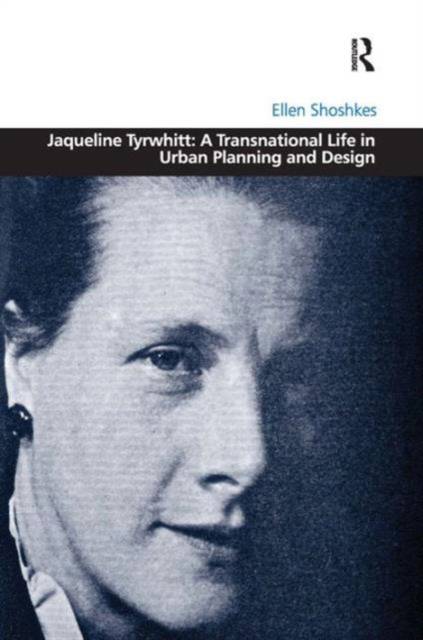
- Retrait gratuit dans votre magasin Club
- 7.000.000 titres dans notre catalogue
- Payer en toute sécurité
- Toujours un magasin près de chez vous
- Retrait gratuit dans votre magasin Club
- 7.000.0000 titres dans notre catalogue
- Payer en toute sécurité
- Toujours un magasin près de chez vous
Jaqueline Tyrwhitt: A Transnational Life in Urban Planning and Design
Ellen Shoshkes
202,95 €
+ 405 points
Format
Description
Jaqueline Tyrwhitt's life story is truly a gap in the planning and urban design literature: while largely unacknowledged, she played a central role in twentieth-century design history. Here, Ellen Shoshkes provides a full and insightful appraisal of the British town planner, editor, and educator who was at the center of the group of people who shaped the post-war Modern Movement. Beginning with an examination of her early work planning for the physical reconstruction of post-war Britain, Shoshkes argues that Tyrwhitt forged a highly influential synthesis of the bioregionalism of the pioneering Scottish planner Patrick Geddes and the tenets of European modernism, as adapted by the Mars group, the British chapter of CIAM. The book traces Tyrwhitt's subsequent contribution to the development of this set of ideas in diverse geographical, cultural and institutional settings and through personal relationships. In doing so, the book also sheds light on Tyrwhitt's role in the revival of transnational networks of scholars and practitioners concerned with a humanistic, ecological approach to urban and regional planning and design following World War Two, notably those connecting East and West. The book details Tyrwhitt's role in creating new programs for planning education in England, North America and Asia; pioneering methods for registered, overlay mapping (a forerunner of GIS), shaping post-war CIAM discourse on humanistic urbanism and assisting CIAM president Jose Luis Sert establish a new professional field of urban design based on this discourse at Harvard University (1956-69); consulting to the United Nations; collaborating with Sigfried Giedion on all of his major publications in English from 1947 on; and helping Constantinos Doxiadis promote a holistic approach to the study of human settlements, which he termed Ekistics, as a founding editor of the journal Ekistics and in the ten Delos Symposia Doxiadis hosted (1963-1972). The book concludes with an a
Spécifications
Parties prenantes
- Auteur(s) :
- Editeur:
Contenu
- Nombre de pages :
- 280
- Langue:
- Anglais
- Collection :
Caractéristiques
- EAN:
- 9781409417781
- Date de parution :
- 23-05-13
- Format:
- Livre relié
- Format numérique:
- Genaaid
- Dimensions :
- 156 mm x 233 mm
- Poids :
- 679 g

Les avis
Nous publions uniquement les avis qui respectent les conditions requises. Consultez nos conditions pour les avis.






